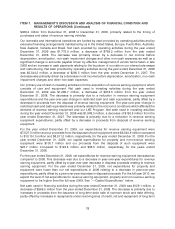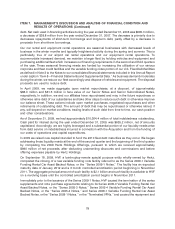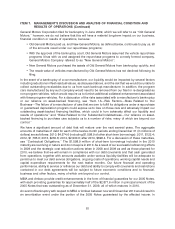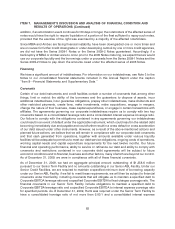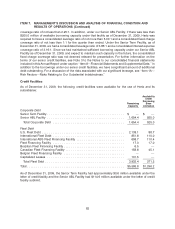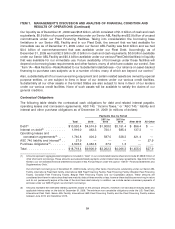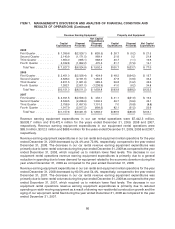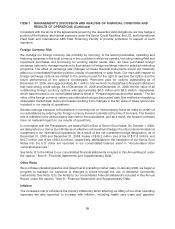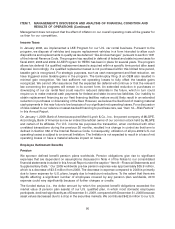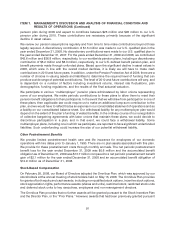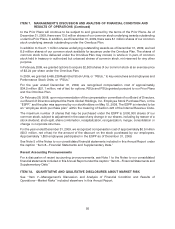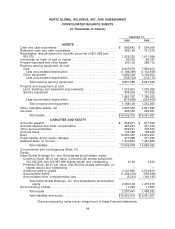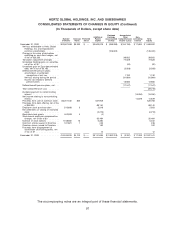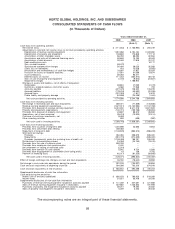Hertz 2009 Annual Report Download - page 108
Download and view the complete annual report
Please find page 108 of the 2009 Hertz annual report below. You can navigate through the pages in the report by either clicking on the pages listed below, or by using the keyword search tool below to find specific information within the annual report.ITEM 7. MANAGEMENT’S DISCUSSION AND ANALYSIS OF FINANCIAL CONDITION AND
RESULTS OF OPERATIONS (Continued)
matters have been accrued, and those expenses are reflected in our consolidated financial statements.
As of December 31, 2009 and 2008, the aggregate amounts accrued for environmental liabilities,
including liability for environmental indemnities, reflected in our consolidated balance sheet in ‘‘Other
accrued liabilities’’ were $2.0 million and $2.2 million, respectively. The accrual generally represents the
estimated cost to study potential environmental issues at sites deemed to require investigation or
clean-up activities, and the estimated cost to implement remediation actions, including on-going
maintenance, as required. Cost estimates are developed by site. Initial cost estimates are based on
historical experience at similar sites and are refined over time on the basis of in-depth studies of the sites.
For many sites, the remediation costs and other damages for which we ultimately may be responsible
cannot be reasonably estimated because of uncertainties with respect to factors such as our connection
to the site, the materials there, the involvement of other potentially responsible parties, the application of
laws and other standards or regulations, site conditions, and the nature and scope of investigations,
studies, and remediation to be undertaken (including the technologies to be required and the extent,
duration, and success of remediation).
Risk Management
For a discussion of additional risks arising from our operations, including vehicle liability, general liability
and property damage insurable risks, see ‘‘Item 1—Business—Risk Management.’’
Market Risks
We are exposed to a variety of market risks, including the effects of changes in interest rates, foreign
currency exchange rates and fluctuations in gasoline prices. We manage our exposure to these market
risks through our regular operating and financing activities and, when deemed appropriate, through the
use of derivative financial instruments. Derivative financial instruments are viewed as risk management
tools and have not been used for speculative or trading purposes. In addition, derivative financial
instruments are entered into with a diversified group of major financial institutions in order to manage our
exposure to counterparty nonperformance on such instruments. For more information on these
exposures, see Note 12 to the Notes to our consolidated financial statements included in this Annual
Report under the caption ‘‘Item 8—Financial Statements and Supplementary Data.’’
Interest Rate Risk
From time to time, we may enter into interest rate swap agreements and/or interest rate cap agreements
to manage interest rate risk. See Notes 3 and 13 to the Notes to our audited annual consolidated
financial statements included in this Annual Report under the caption ‘‘Item 8—Financial Statements and
Supplementary Data.’’
We have a significant amount of debt (including under our U.S. and International Fleet Debt facilities,
other international fleet debt facilities, International ABS Fleet Financing Facility and Senior ABL Facility)
with variable rates of interest based generally on LIBOR, Euro inter-bank offered rate, or ‘‘EURIBOR,’’ or
their equivalents for local currencies plus an applicable margin. Increases in interest rates could
therefore significantly increase the associated interest payments that we are required to make on this
debt.
We have assessed our exposure to changes in interest rates by analyzing the sensitivity to our earnings
assuming various changes in market interest rates. Assuming a hypothetical increase of one percentage
point in interest rates on our debt portfolio as of December 31, 2009, our net income would decrease by
an estimated $17.2 million over a twelve-month period.
88


